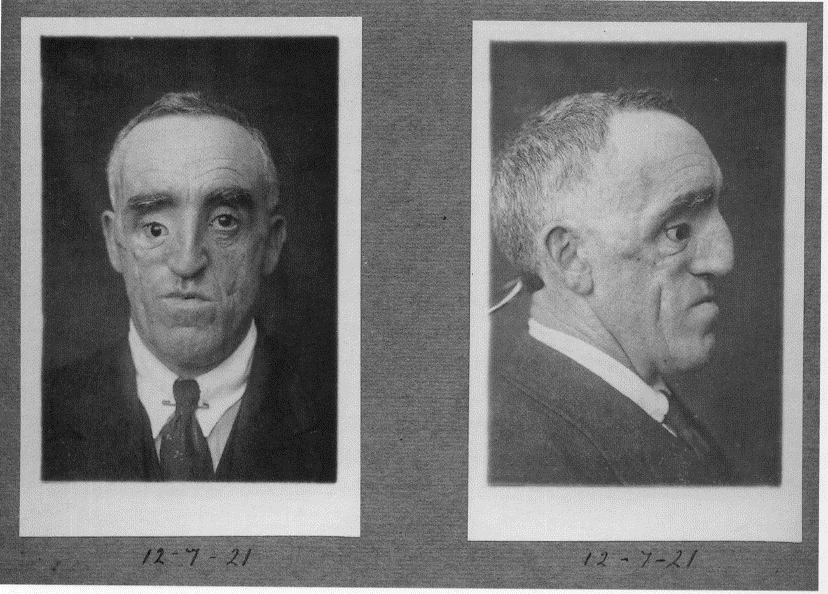
The Face
Of War
New Zealand's
Great War Photography
Sandy Callister
(Auckland University Press)

Over sixteen million people died during World War I. Twenty-one million more were wounded. Total deaths for the "British Imperial Forces" numbered 1,114,914.Over 100,000 men were sent from New Zealand to fight, a full 40% of men of military age. "The toll was particularly high for a small nation," the author reports, "equivalent at the time to 10 million Americans." Final casualties for New Zealand were almost sixty thousand.
Soldiers were allowed to carry cameras into battle and took pictures of much (but not all) that they saw. The newly invented "autographic camera" from Kodak was small and portable and, was, as their ads claimed, "positioned as the visual historian of the household." The Autograph was billed as "The Soldier's Kodak." Film was available in every country.
As small as a note book or diary and will tell a more interesting and convincing story of your share in the Great War story.
Snapshots could be used for "portraiture and landscapes," but Callister thinks that New Zealand soldiers photographed the war itself with gusto. The autographic camera was sturdily democratic. "Cameras required no special skill ... ordinary soldiers avidly photographed and communicated their experiences."
Photographs also provided memento mori. "Families used the photographs of soldiers as symbols of their absent bodies and as artifacts of mourning and memory."
More unsettling, however, was a secret military use, "confined to institutional files ... outside the collective memory." These were medical photographs of the wounded. Such pictures
became part of a militarized way of seeing war, one that relied on an industrial bureaucracy to produce more and more men for battlefield consumption, and given the high casualty rates, a military administrative bureaucracy to deal with the wounded and their rehabilitation.
§ § § There are some seventy-five photographs here. There are pictures from New Zealand newspapers of those sent to Gallipoli and to the Western Front. There are shots of men in training, men in the trenches, women on the homefront.
Most haunting, however, are the eighteen photographs of soldiers who have been in combat, those who had suffered devastating facial wounds. The author found these hidden in a medical archive of WWI records at Queen Mary's Hospital in New Zealand. Callister suggests that these photographs have "more power because of their unfamiliarity; they do not easily slot into any of the existing mental pictures we have of the Great War."
Images like these --- close-ups of wounded soldiers --- are conspicuously absent from our nation's war historiography, and for that matter, the Allied war histories ... These photographs bear testimony to the murderous violence of the Western Front; they also assault our sensibilities.
The Face of War is the ironical title of this book, for the faces of the mutilated are indeed "the face of war." The author says that they represent a "visual violence," which "has the potential to challenge and subvert the many words written about the war."
The cover is particularly subtle. Ten or twelve soldiers are shown on a hillside, prepared for battle ... complete with guns, bayonets, helmets, canteens. Most are peering out over the crest, presumably towards the battlefield. One soldier, however, is lying down, resting, half hidden by the gun of another soldier. He is looking downhill, behind them.
--- Lolita Lark